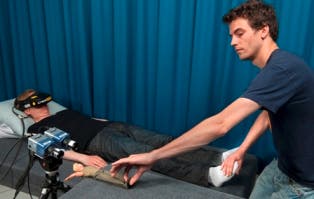Our perception of size and distances is basically a product of how the brain interprets different visual signals, like for example the size of an object on the retina or its movement across the visual field. Now, if you were shrinking to the size of a doll in your sleep, when you woke up, the world would seem much more bigger, and the distances would have a whole new meaning. Some researchers have suggested that following this train of thought, shorter people might overappreciate distances, while taller ones might underappreciate them. But this was just a hunch – until now.

Henrik Ehrsson and his colleagues at Karolinska Institutet have already managed some pretty awesome stuff, like creating the illusion of body-swapping with other people or mannequins. Now, they used approximately the same techniques to create the illusion of having a very large body, or a small, barbie-like one. Their results, which were published in PLoS (Public Library of Science) prove for the first time that the size of our bodies is strictly connected with how we perceive the space around us.
“Tiny bodies perceive the world as huge, and vice versa,” says study leader Henrik Ehrsson.
This altered perception of space was assessed by asking subjects to estimate the size of different blocks, and then, with their eyes closed, walk towards those blocks. The illusion of having a small body caused an overestimation of both the distances and the sizes, while a bigger body had the opposite problems. This may also be a result of the fact that the brain often judges size by comparison.
“Even though we know just how large people are, the illusion makes us perceive other people as giants; it’s a very weird experience”, says Dr Ehrsson, who also tried the experiment on himself.
What’s even more intriguing is that this study shows it is perfectly possible and do-able to create an illusion of body swapping with extremely large or small artificial bodies, not only man sized ones, an application that might have huge benefits in the future.
“It’s possible, in theory, to produce an illusion of being a microscopic robot that can carry out operations in the human body, or a giant robot repairing a nuclear power plant after an accident”, he says.





